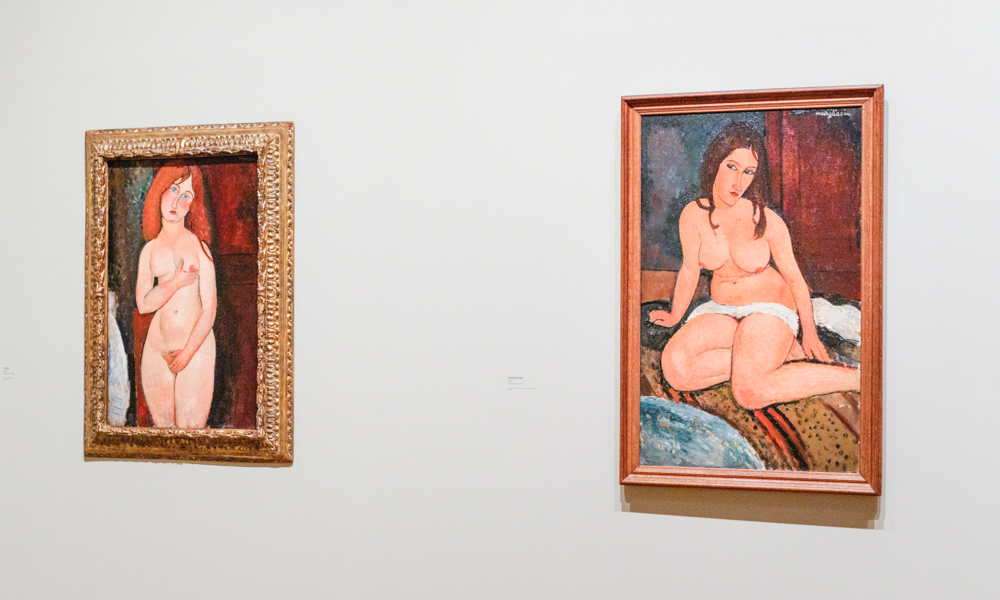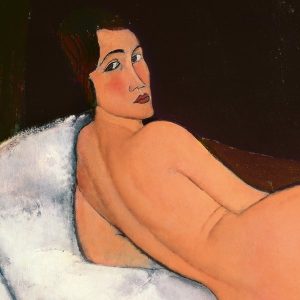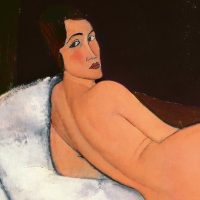Modigliani at Tate Modern

When it comes to Modigliani, the eyes have it. Cartoonish, blacked out or cross-hatched in palest blue, the gaze of a Modigliani portrait is both immediately present, following you round the room, and strangely absent, as if the personality of the sitter has been effaced through paint. It’s impossible to say exactly how the artist achieves this phenomenon, but the effect is undoubtedly unsettling.
Viewed en masse, as in the new exhibition at Tate Modern, these portraits have a power that is almost auratic. It helps, perhaps, that images of wealthy patrons and famous fellow artists rub shoulders with servants, local children and perhaps even prostitutes.
The diversity of this social milieu, the display implies, is emblematic of the variety of artistic movements, styles and media being experimented in Paris in the 1900s and 1910s. Certainly, traces of almost every famous artist and movement of the era can be seen in Modigliani’s paintings; cubism, pointillism and Cezanne’s post-impressionism can all be identified as influences.
Despite this, however, the artist manages to maintain a strikingly consistent aesthetic throughout his career. His swan-necked, black-eyed figures have now become iconic, and it is a treat to see some of his most important works in the flesh.
At the centre of the exhibition is a collection of 12 nudes, the largest group ever to be shown in the UK. Modigliani’s mastery at manipulating flesh tones makes these paintings an aesthetic sensual delight, but they are perhaps not as revolutionary as the show wants to make out. It seems almost unnecessary to point it out, but these “nudes” are all of women, and they are all pleasingly voluptuous without being overtly sexual in their content. The text points to the inclusion of pubic hair, but its tasteful depiction is no more revolutionary than that found in works by Goya or Courbet from the previous century. These are primarily objects to be looked at for the visual titillation of men, rather than bold proto-feminist depictions of women in charge of their sexuality.
In general, however, the exhibition is a feast for the eyes. Modigliani is a master of his medium and the show at Tate effectively conveys his skill. At times it lacks a clear narrative arc and it sometimes feels more focused on the identity of the sitters than on the artistic developments of the artist (an easy trap to fall into with figurative portraiture). Overall, however, Modigliani is a delightful foray into one of the world’s favourite artists.
Anna Souter
Photos: Daniel Donovan
Modigliani is at Tate Modern from 23rd November 2017 until 2nd April 2018. For further information or to book visit the Tate website here.



























Facebook
Twitter
Instagram
YouTube
RSS